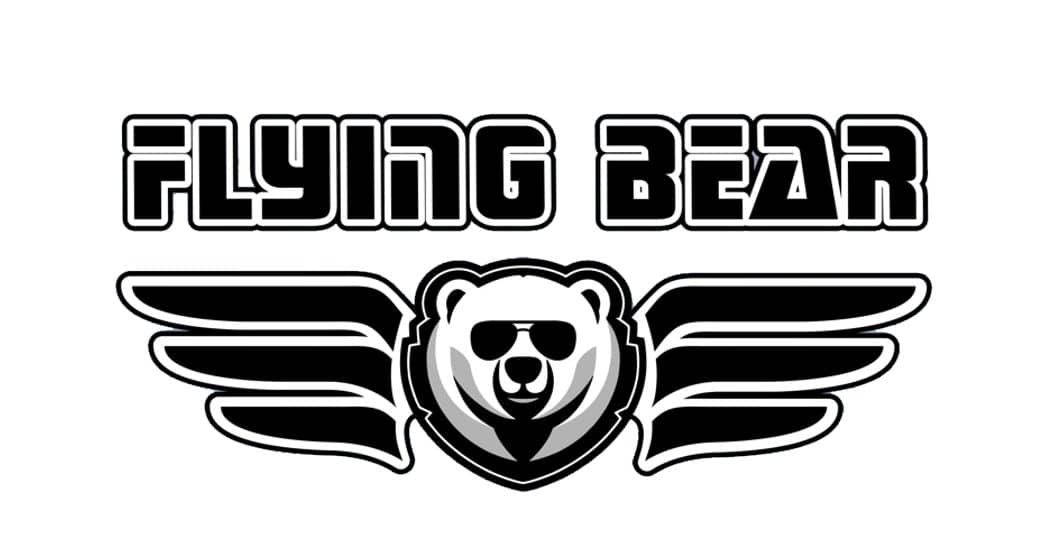Aircraft
This presentation is kept very short and only serves to give an orientation.
For more pictures, please see the “People & Planes” section in the Gallery.
Type A
Based on Bleriot XI and used mainly as 1-seat trainers. Some were exported to Denmark.
Some late Thulin A:s had their original 50 hp engines changed to 90 hp asince they were converted into 2-seaters.
No less than 3 aircraft have survived and even more remarkably two are airworthy, both operated by Mikael Carlson. The third one is also recently restored to as-new condition.
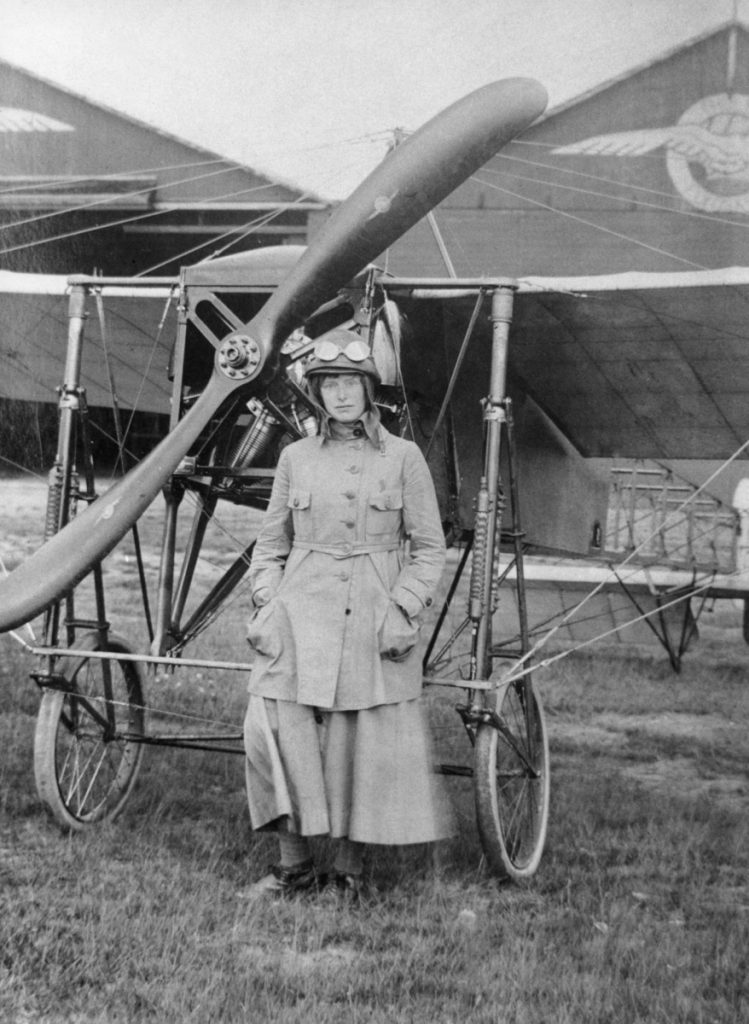
She was tragically killed in 1922 after her parachute, a German Heinecke failed to open until at 50 m height.
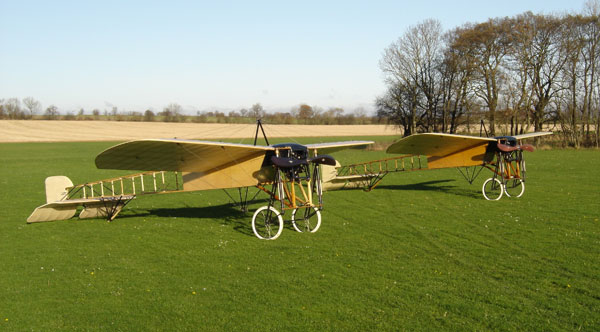
His first Thulin A crossed the English Channel in 1999 exactly 90 years after Louis Blériot, the second one on the 100 years anniversary.
Bleriot XI was not only the first aircraft to cross the Channel, it was also the first to fly over the Alps, the first military aircraft and the first one in which a looping was performed.
Type B
Based on Morane-Saulnier MS G and build under license by the Thulin company, AETA.
It was used both as a trainer at Thulin´s Flying School and by the military. One Thulin B has survived to this day.
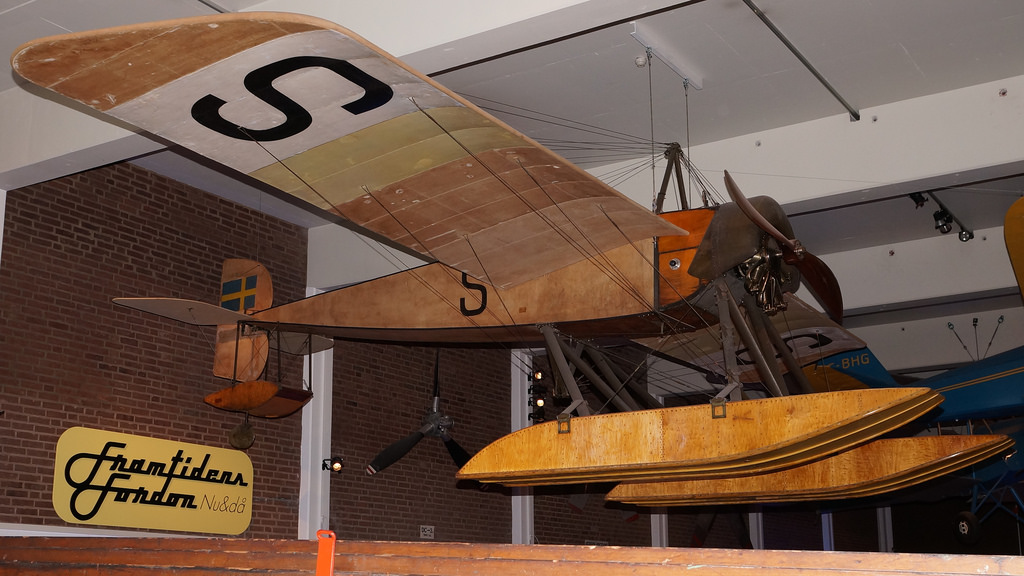
Type C
Based on Albatros BIIa. The aircraft was originally built by Södertelge Werkstäder and modified by Thulin with new wings using balanced ailerons. It was used at Thulins Flying School as 2-seat trainer.
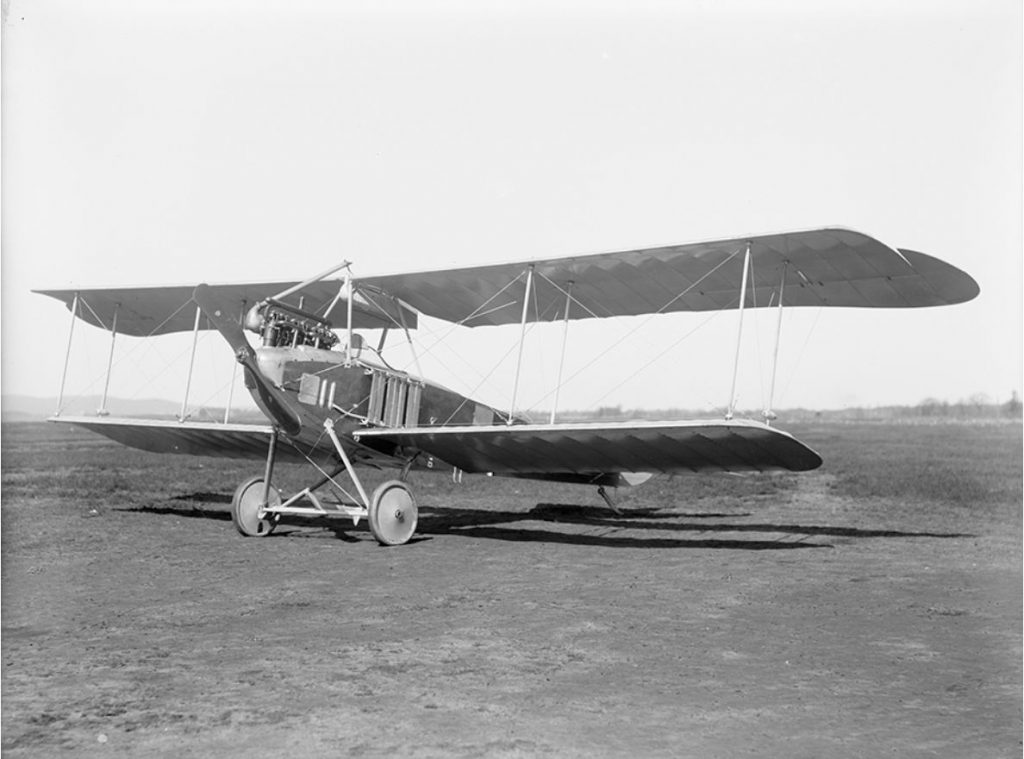
Type D
Based upon Morane-Saulnier L “Parasol”. It was used both as a trainer and by military forces in Sweden and Finland.
In early 1918 count Erik von Rosen donated a Thulin D to “The White” in the Finnish civil war. It became Finland´s first military aircraft and the Finnish Airforce chose to use von Rosen´s personal luck symbol as their Air Force insignia. It was a blue swastika on white bottom. It has no connection to the nazi-swastika though. Finland bought one additional Thulin D and their D´s were the only Thulin aircraft to see action in war, being used in both bombing and reconnaissance missons. The first one was destroyed in a crash when the pilot pulled up to hard and the wings collapsed. The second one was partly destroyed in a fire.
Today one Thulin D replica exists in museum in Finland and one (the second one?) is under restoration. The second one is currently equipped with a LeRhone engine and not the original Thulin A.

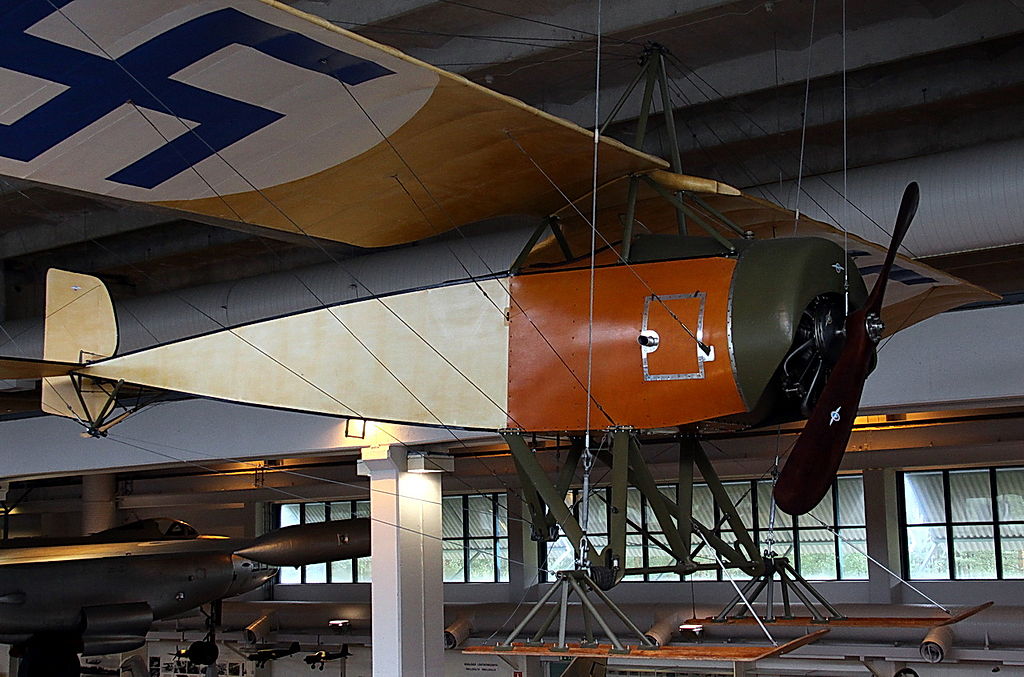
Type E
A 2-seat reconnaissance aircraft and trainer, used by the Swedish Army Flying Corps and Thulin´s Flying School.
The army intended to use their Thulin E:s in the north of Sweden, but soon realized that they needed to put the aircraft on floatplanes for landings on lakes due to the poor condition of the landing fields.
Eventually the aircraft turned out too heavy for the 90 hp rotary engine and they were sent south again as trainers.
The Army now changed the specification and ordered a modified E; Thulin L.

Type F
Thulin F is not, except from the 90 hp Thulin A engine, a Thulin aircraft. It was originally called SAF H:2 (Swedish Airplane Factory Type H:2) and offered to the Navy in 1915, but soon after SAF was taken over by Södertelge Werkstäder and the aircraft changed name to SW 17. The Navy, however, did not approve the delivered prototype. When Thulin´s company AETA bought SW´s aircraft department the 4 remaining SW 17:s were transferred to the new owner and the aircraft once again changed name; Thulin F.
The type was unfortunately a failure, likely because of issues with the float planes, and it had probably fared much better as a 1 seat land plane. Eventually Thulin managed to sell all four to Denmark, were at least one was destroyed in a crash.

Type FA
2-seat reconnaissance aircraft used by the Swedish Army Flying Corps and the Dutch Airforce. It was designed to be powered by a 160 hp Benz or a 150 hp Mercedes inline engine. The aircraft turned out to be underpowered, especially with the Mercedes engine. The last machines were instead powered by a 170 hp Thulin built version.

Type G / GA
2-seat, heavy seaplane ordered by the Swedish Marine to patrol the long coast line of Sweden.
Type G was powered by a Mercedes 150 hp, while type GA had a Curtiss 200 hp installed.
There may be some resemblances with the Albatros BII, but the Thulin G and GA had a different fuselage, completely different tail surfaces and a much bigger wing span.
One Type G has been restored and can now be seen at the Swedish Airforce Museum.


Type H
By far Thulin´s biggest aircraft, the 4-crew, 3-engine land- and seaplane Thulin H.
The order from the Army Flying Corps and the aircraft was ready in the fall 1917 and approved in early 1918.
During 1917, however, the supply of better suited inline engines grew, finding their way into Thulin FA and G, and the Flying Corps´ order for Thulin H was cancelled.
Thulin tried to offer it as a civilian cargo aircraft, but better and cheaper surplus machines flooded the market after the war.
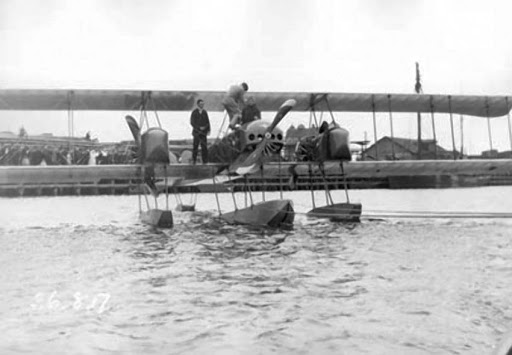
Type K/KA
Sweden was not part of WW1 and neither the army nor the marine saw any reason to use anything but trainers and reconnaissance aircraft. Nevertheless the Army Flying Corps eventually saw a need for advanced training and ordered two Thulin K fighters, the first fighter to be designed by the Thulin engineers. The time between order and delivery was extreley short mainly because the type was basically a mix of earlier Thulin types. Thulin B wings and Thulin D fuselage. Tail surfaces were more rounded and the cowl was slightly changed. Two different set of wings were used; 14 or 16 m2.
The design was in fact obsolete as a fighter but thanks to its low weight and good manoeuvrability it became popular among its pilots.
In Sweden the K:s were unarmed, however it is possible that armed tests were performed.
The Dutch Marine ordered a squadron of Thulin K:s and armed them with two synchronized Madsen 8 mm guns.
They also performed tests with a 20 mm automatic cannon!
They also ordered 3 Thulin KA, 2-seat version of the K, for training purposes.
The last K (or rather KA) to be produced became Enoch Thulin´s personal aircraft.
Initially the K was not equipped with ailerons but used wing warping instead as on the Thulin A, B and D as well as the Fokker Eindekker.
It also had a single elevator surface and no stabilisator.
The army, however, modified their aircraft and installed balanced ailerons and balanced elevators with stabilisators and Enoch Thulin soon followed their initiative. The modification seems to have worked out fine on the army´s aircraft, however Thulin reported severe problems with aileron vibrations in high g dives and it is a complete mystery why he continued with these manouvres. On a practice flight on May 14 1919, in a high g spiral dive, the right aileron was torn from its wing and the control wire snapped or was pulled out of its sockets, inside the cockpit. The ailerons had no external control horns, instead its axle ran all the way into the cockpit were it was connected to control horns inside the cockpit. This was no new design for Thulin, it was used on Thulin N as well as on many aircraft in Germany and France. This means the control wire was run around inside the cockpit, completely surrounding the pilot. When the wire snapped it´s not unlikely that the seat belt was cut since Thulin was thrown out of the cockpit soon after the aileron came loose. Its also possible that the wire injured Thulin or even killed him. What caused the vibrations is unclear. The aileron solution was well known technology for Thulin and Lt Rodéhn was known for stunting the Flying Corps´ Thulin K intensively and without problems. An assembly error?
A couple of reports have been written about the cause of the crash, but they both contains small errors meaning the conclsions are somewhat ambigious.
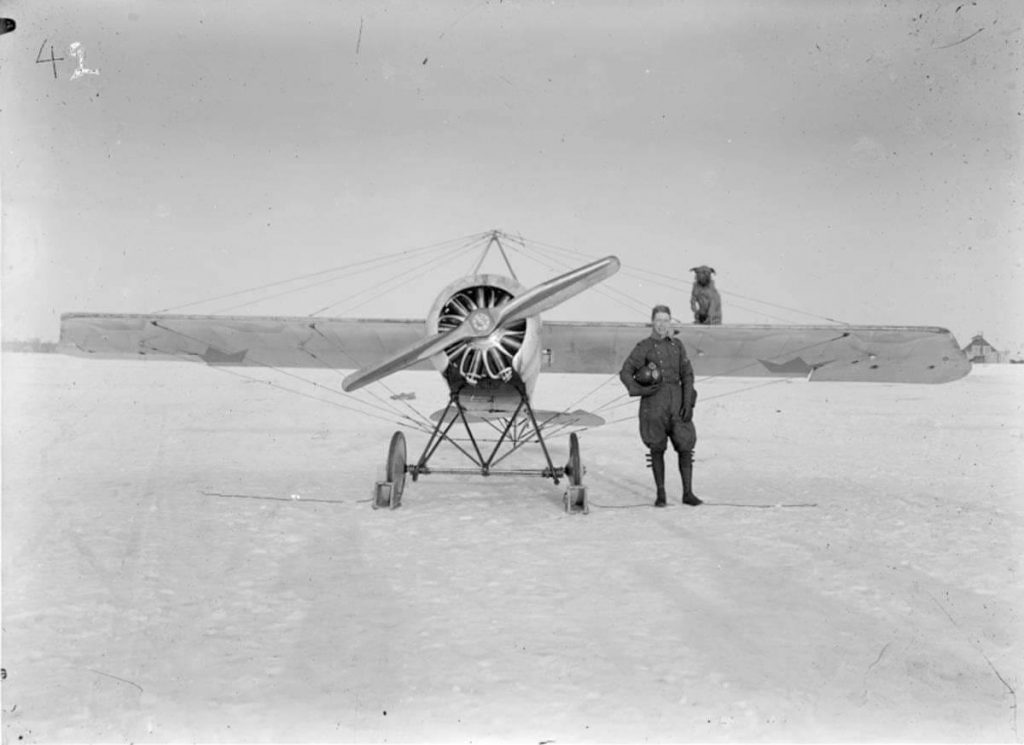


Type L
After having problems with type E when operating in northern Sweden the army changed the specification and ordered Type L. It had incresed wing surface and a more light weight design, especially the float plane struts.
The type was used extesively for reconnaissance, training and artillery direction until the armistice.
One Type L, plus some parts from the LA and maybe FA as well, was rebuilt by the Flying Corps´workshop into a 2-seat triplane.

Type LA
Thulin L was improved into the LA by giving it a different fuselage and an increased elevator. The type was used by the Dutch Marine as a trainer but was not ordered by the Swedish armed forces. One LA ended up in Finland as their fifth aircraft, thus given the number F5. The type was also used at Thulin´s Flying School, as well as by couple of private companies using them for passenger flights mainly between Malmö in Sweden and Copenhagen in Denmark.

Type M / Nielsen & Winther Type Aa/Ab/Ac
The type was developed in cooperation with the Danish company Nielsen & Winter and was only used in Denmark.
The design was infuenced by Nieport 11 “Bebe”. Although some design features are clearly Thulin designs it is a bit unclear how big Thulin´s part of the developent was, however Dr Thulin´s contacts with the Danish Airforce were intense. .

Type N
Please refer to the Documentation section.
Type NA
Please refer to the Documentation section.
The Triplane.
This was not entirely a Thulin design. The idea came from Henry Kjellsson at the Flying Corps Workshop´s and together he and Enoch Thulin designed wings for a 2 seat triplane to be used as an advanced trainer. The rear fuselage was basically a Thulin Type L, the front fuselage was from a Thulin Type LA and the rear steering surfaces were a mix of Thulin designs.
The Triplane was first flown in September 1918 with test pilot Lt Rodéhn at the controls and he was very pleased with its flying characteristics. However, with the increased drag of an extra pair of wings, two pilots and only 90 hp engine it was in fact underpowered for its pupose. The Triplane was lost in April 1919 when its pilot failed to recover from a spin.
By this time the Flying Corps had already ordered a large number of Thulin A engines to use in the Triplane trainers, but these engines were instead used in an other trainer, the hugely successful 1-seat “Tummelisa”.

Engines
All in all about a thousand engines of different types were built by the Thulin factory during the war, and in so becoming the very foundation for the companys economy and ability to develop aircraft.
This fact is often overlooked.
Thulin named aircraft Thulin A, B, C, D, etc. Confusingly engines and cars were also named A, B, C etc.
This means 2-seat Thulin A aircraft were also powered by Thulin A engines.
There were a number of different engine types, both rotaries and stationary engines, but here I will mainly describe the most common type, Type A, and its improvement, Type G.
Engine Type A
During WW1 Sweden had, just as all neutral countries, no possibilities to buy aircraft or aircraft engines from the countries at war, but were left to use what they could produce by themselves or copy.
Many call this a licence built French LeRhone 80 hp engine (type 9C), however that is not entirely correct. It´s not a copy and there was no licence when production started.
By the time of the outbreak of the war a private person imported an aircraft powered by an 80 hp LeRhone engine to Sweden. Unfortunately the plane crashed upon arriving in Sweden and Thulin´s company got the opportunity to “have a look” at it´s engine. The company not only took a look at it. They took it apart completely, measured it, had its metallurgy tested and came up with what needed to be improved. The reverse-engineering work with the engine was led by the chief engineer of the workshop, engineer Einar Egnell.
After everything was measured and tested the engine was re-assembled and sent it to its owner and production of the redesigned engine, now designated Thulin Type A, started immediately.
The original engine was prone to over heating, a problem that was adressed with the new design.
The most significant changes were a redesigned crankshaft, higher quality alloys and balanced rocker arms. The rocker arms are easily recognized, the other changes of course can´t be seen on the assembled engine. These changes together gave an additional 10 hp, 90 hp in total. Late Thulin A engines were equipped with two ignition plugs per cylinder, adding another 10 hp.
Hundreds of Thulin A engines were built, most of them being exported to Holland who bought more than 10 times as many engines as airplanes. Rumours say that Thulin engines were used in Fokker Dr1:s, but there are no documents to prove this, it´s pure guess and speculation. Enoch Thulin himself clearly favoured the French/British side, especially after having been shot at by a German seaplane over Swedish waters. Such an export would have violated Swedish law anyway.
The LeRhone engine types were one of the most successful and common in WW1, thge main versions being thy 80 hp type 9C, the 110 hp 9J (9Jb 130 hp) and the German copy of 9J, the 110 hp Oberursel Ur.II.
The different versions were used in many of the most successful fighters such as the Nieuport 11-28, the Sopwith Pup and the most famous of them all the Fokker Triplane and the Sopwith Camel.
Other rotary engines were the successful 150 hp Bentley BR1, the 230 hp Bentley BR2 and the very common but maybe a little less reliable 130 hp Clerget 9B.


Engine Type B
Type B was a rotary with two pushrods per cylinder, instead of type A and G that had only one (in fact A/G had a push&pullrod). Two pusrods were also used on Clerget- and Bentley engines. Type B did not see production except from a small number.

Engine Type G
Type A was further developed basically by increasing cylinder volume significantly and changing the valve springs.
Early Type G:s delivered 135. Later the engine delivered 150 hp. A late 150 hp Thulin G engine is installed in the Thulin NA. The engine in Thulin N was originally a Type G of 135 hp, but the one istalled today is a Thulin A.
There are different sources about how and when the licence agreement was done. Some say it was done in 1914, other say it was done after the war. The prize seems to have been set to a symbolical sum and thechnological sharing only.
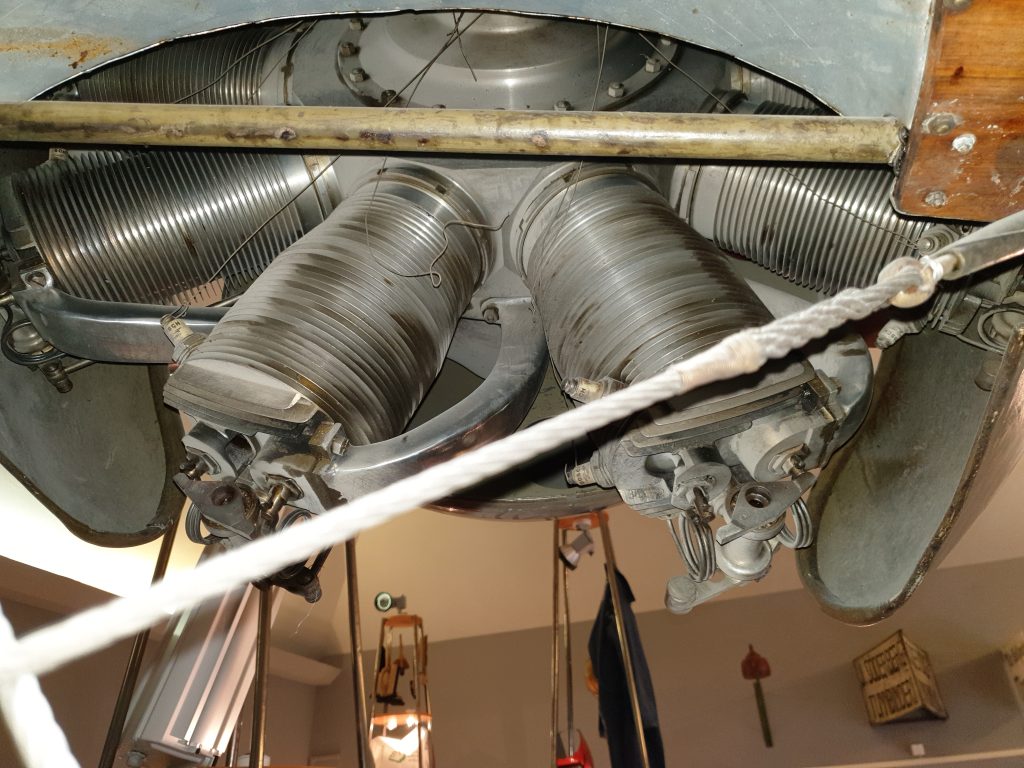
Inline, watercooled engines.
The first inline engine to leave the factory was a 160 hp one that at first glance looked lika a Mercedes engine, but in fact was an independed design. In late 1918 an even stronger version, 260 hp, was ready but the armistice stopped the production.
